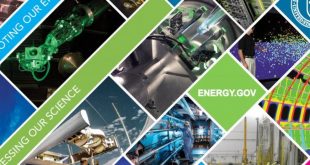Transport is responsible for around 23% of energy-related carbon dioxide emissions globally. This is expected to double by 2050. Motor vehicles also put a burden on society, especially in urban environments where they are chiefly responsible for noise and air pollution. Electric vehicles (EVs) have been considered as critical technology for …
Read More »Marine Communication involves Secure ship-to-ship and ship-to-shore communications
Globalization has opened the doors for trade across the world and it has thus become necessary for ships to be equipped with the latest forms of communication and technology. Communication is vital for the safe navigation and management of ships. Marine communication involves ship-to-ship and ship-to-shore communication. Cell phones are …
Read More »DARPA EDGE enabling Human Control of Military Autonomous and AI based systems
Interactions with technologically sophisticated artificial intelligence (AI) agents are now commonplace. We increasingly rely on intelligent systems to extend our human capabilities, from chatbots that provide technical support to virtual assistants like Siri and Alexa. Examples of such systems include air traffic control, aircraft cockpits, chemical processing, and the power …
Read More »DARPA SSITH developed secure hardware architectures for Unhackable Military systems, FETT testing exploits to thwart Tampering
As 5G and IoT proliferation sweep across the planet, businesses and consumers are benefiting greatly from increased connectivity. However, this connectivity is also introducing greater risks and security concerns than ever before. As the Military and civilian technological systems, from fighter aircraft to networked household appliances, are becoming ever more …
Read More »Gallium Nitride technology enabling IoT revolution, Cellular 5G , Optoelectronics and sensors
Integrated circuits and power devices utilized by the semiconductor industry for the production of advanced computers, consumer electronics, communication networks, and industrial and military systems have been almost exclusively based on silicon technology. The requirements of future electronics place a great emphasis on achieving new devices with greater power density …
Read More »Sustainable food technologies for future need to feed the 10 billion global population by 2050, amid threats to global food supply chain
The global population grows from 7 billion in 2010 to a projected 9.8 billion in 2050, and incomes grow across the developing world, overall food demand is on course to increase by more than 50 percent, and demand for animal-based foods by nearly 70 percent. Yet today, hundreds of millions …
Read More »polaritonics
Between electronics and photonics there exists a frequency gap of approximately two octaves, i.e., the frequency range between 100 GHz and 10 THz, across which there are limited capabilities for signal generation, control, guidance, and processing. Researchers have demonstrated e that phonon-polaritons in ionic crystals like LiNbO3 or LiTaO3 may …
Read More »CMOS image sensor (CIS) advancements enabling big growth in Smartphone camera, machine vision, medical imaging and security applications
Innovations in CMOS image sensor (CIS) technology continue to enhance digital imaging landscape. While the demand has been driven by smartphone makers, leveraging enhanced photo-taking capabilities to differentiate their devices from the competition, there is also a growing market for applications in the automotive, security, medical, and manufacturing sectors. Smartphone camera …
Read More »DARPA SQUIRREL exploiting robots relays for military communication in caves or jungles with heavy foliage
Mobile robots used by the military and law enforcement agencies require a robust communications link for successful mission executions. Such mobile robots are increasingly used in life-threatening situations and hazardous environments, rendering a solid communications link to be of vital importance. Tactical mobile robots used in military and law enforcement operations …
Read More »U.S. DOE ULTIMATE program developing Ultra-High Temperature Materials for efficient gas turbine in aviation
The jet engine is the most complex element of an aircraft and one of the most complex human-made products ever developed, housing thousands of individual components — and ultimately determining fuel efficiency for aircraft All turbines operate on similar principles: A gas or other fluid turns a rotor, which …
Read More » International Defense Security & Technology Your trusted Source for News, Research and Analysis
International Defense Security & Technology Your trusted Source for News, Research and Analysis









